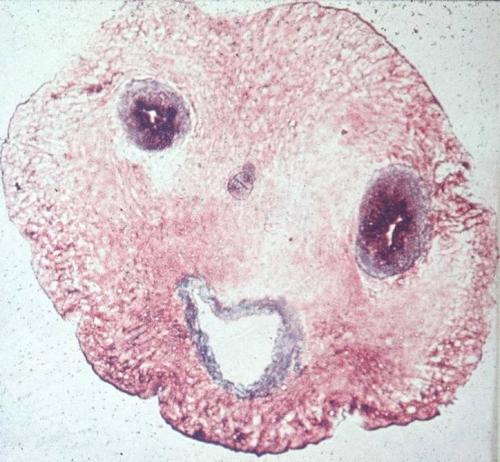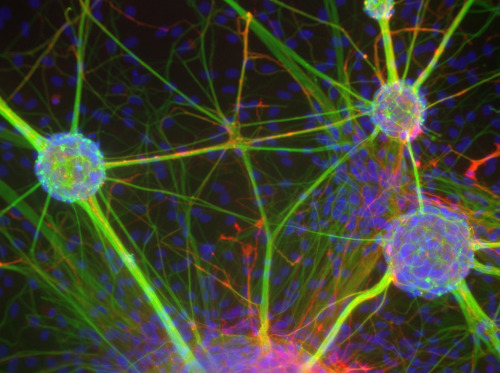Мда... Читаем на http://www.eurekalert.org/pub_releases/2010-03/jaaj-oot022510.php:
Offspring of 2 psychiatric patients have increased risk of developing mental disorders
Offspring of two parents with schizophrenia or bipolar disorder appear more likely to develop the same illness or another psychiatric condition than those with only one parent with psychiatric illness, according to a report in the March issue of Archives of General Psychiatry, one of the JAMA/Archives journals.
The offspring of two parents with psychiatric illness represent an extremely high-risk group, according to background information in the article. Studying these children permits researchers to assess the risk associated with two sources of genetic predisposition to mental disorders. "Such risks will be of use to genetic counselors to inform personal decisions with regard to marriage, family formation, adoption and health insurance planning," the authors write.
Irving I. Gottesman, Ph.D., Hon.F.R.C.Psych., of the University of Minnesota Medical School, Minneapolis, and colleagues studied a population-based cohort of 2.7 million individuals born in Denmark. The researchers matched records in a general registry of the population with a database of psychiatric admissions. They identified individuals whose parents had both been admitted to psychiatric facilities for schizophrenia and bipolar disorder, and compared the rate of psychiatric admissions for these individuals to those of offspring with one or no parents admitted to psychiatric facilities.
Rates of schizophrenia were highest among offspring of two parents with schizophrenia. Of the 196 couples who both had schizophrenia, 27.3 percent of their 270 children were admitted to a psychiatric facility, increasing to 39.2 percent when schizophrenia-related disorders were included. This compared with a rate of 7 percent among 13,878 offspring of 8,006 couples in which one parent had schizophrenia and 0.86 percent in 2.2 million offspring of 1 million couples in which neither parent was admitted for schizophrenia.
Similarly, the risk of bipolar disorder was 24.9 percent in 146 offspring of 83 parent couples who were both admitted for bipolar disorder (increasing to 36 percent when unipolar depressive disorder was also included). This compared to a risk of 4.4 percent among 23,152 offspring of 11,995 couples with only one parent ever admitted for bipolar disorder and 0.48 percent in 2.2 million children of 1 million couples with neither parent ever admitted.
When one parent had bipolar disorder and the other had schizophrenia, offspring had a 15.6 percent risk of schizophrenia and an 11.7 percent risk of bipolar disorder.
The risks in this population "are of such a magnitude that they command clinical and national public health attention in countries with health care roughly similar to Denmark's," the authors write.
"It is important to keep in mind that the yields from genetic epidemiology and the strategies implemented are applicable to groups of people, not to the individuals themselves," they conclude. "However, by joining advances in molecular genetics that are adapted for use in epidemiological genetic screening, our kinds of data with the risk groups described might lead to a large and rapid step forward in the understanding of the etiologies of major mental disorders."
24.03.2010
У двух психов вероятность родить третьего повышается
О вреде кокаина и метамфетамина
2 новых статьи:
http://www.eurekalert.org/pub_releases/2010-03/uoc--sdi031710.php - о том, что при повышенной температуре воздуха, риск негативного влияния кокаина на организм увеличивается
http://www.eurekalert.org/pub_releases/2010-03/sfn-bai031210.php - о страшных последствиях употребления метамфетамина матерями.
"Заразительное" поведение в группах
Интересная работа, о которой я прочитала на http://www.eurekalert.org/pub_releases/2010-03/uoc--sdi031710.php
Sleep deprivation influences drug use in teens' social networks
More than 1 behavior can spread simultaneously across a social network
Recent studies have shown that behaviors such as happiness, obesity, smoking and altruism are "contagious" within adult social networks. In other words, your behavior not only influences your friends, but also their friends and so on. Researchers at the University of California, San Diego and Harvard University have taken this a step farther and found that the spread of one behavior in social networks – in this case, poor sleep patterns – influences the spread of another behavior, adolescent drug use.
The study, led by Sara C. Mednick, PhD, assistant professor of psychiatry at the University of California, San Diego School of Medicine and the VA San Diego Healthcare System, will be published March 19 in PLoS One.
"This is our first investigation of the spread of illegal drug use in social networks," said Mednick. "We believe it is also the first study in any age population on the spread of sleep behaviors through social networks."
Using social network data from the National Longitudinal Study of Adolescent Health, Mednick and her colleagues James H. Fowler, UCSD Department of Political Science and Nicholas A. Christakis, Harvard Medical School, mapped the social networks of 8,349 adolescents in grades 7 through 12. They found clusters of poor sleep behavior and marijuana use that extended up to four degrees of separation (to one's friends' friends' friends' friends) in the social network.
Another novel network effect that they discovered was that teens who are at the center of the network are at greater risk of poor sleep, which in turn means they are more likely to use marijuana – putting them at the crossroads of two behaviors increases a teenager's vulnerability.
Contrary to the general assumption that drug use has a negative effect on sleep, the researchers also found that sleep loss is likely to drive adolescents to use drugs – the less they sleep the more likely their friends are to sleep poorly and use marijuana.
"Our behaviors are connected to each other and we need to start thinking about how one behavior affects our lives on many levels," said Mednick. "Therefore, when parents, schools and law enforcement want to look for ways to influence one outcome, such as drug use, our research suggests that targeting another behavior, like sleep, may have a positive influence. They should be promoting healthy sleep habits that eliminate behaviors which interfere with sleep: take the TV out of the child's bedroom, limit computer and phone usage to daytime and early evening hours, and promote napping."










